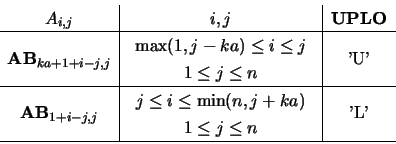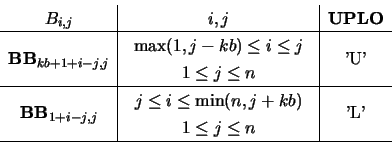On entry, the upper (if UPLO = 'U') or lower (if UPLO = 'L') triangle of matrix

On exit, the contents of AB are destroyed.
On entry, the upper (if UPLO = 'U') or lower (if UPLO = 'L') triangle of matrix

On exit, the factor
The eigenvalues in ascending order.
![\begin{optionarg}
\item[{$ =$\ 'U':}] Upper triangles of $A$\ and $B$\ are stor...
...item[{$ =$\ 'L':}] Lower triangles of $A$\ and $B$\ are stored.
\end{optionarg}](img791.gif)
Default value: 'U'.
The matrix
![\begin{infoarg}
\item[{$=$\ 0:}] successful exit.
\item[{$<$\ 0:}] if {\bf INF...
...d and
no eigenvalues or eigenvectors were computed.
\end{infoarg}\end{infoarg}](img814.gif)
If INFO is not present and an error occurs, then the program is terminated with an error message.